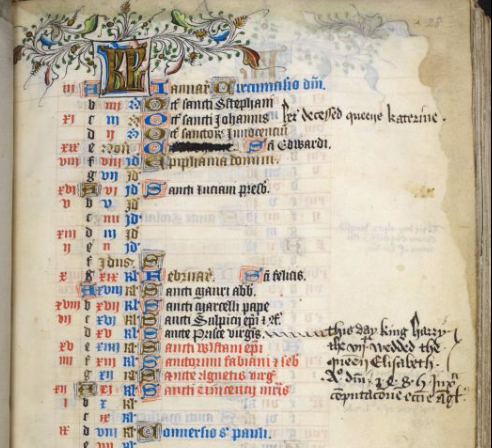Vat lat 9495, donated to the Biblioteca Apostolica Vaticana in the 19th C. by Pope Pius IX, is a rather late Book of Hours, made probably in the second quarter of the 16th century (1519-1550). Neither location of manufacture nor of use is listed, but due to several calendar entries, I would perhaps situate it in the area of Brussels.
The calendar has multiple unusual entries, some of which might point to Brussels. St. Gudile (1522) is indicated in red and her octave (4365) is not only indicated on Jan. 15 (see f.1r below), but has pushed St. Maurus (1253) to the following day. Less obviously useful for localization are several unique Octaves, St. Michael at Monte Gargano (4360), St. Catherine (4367), and St. Barbara (4368).
(DB Id: 243)
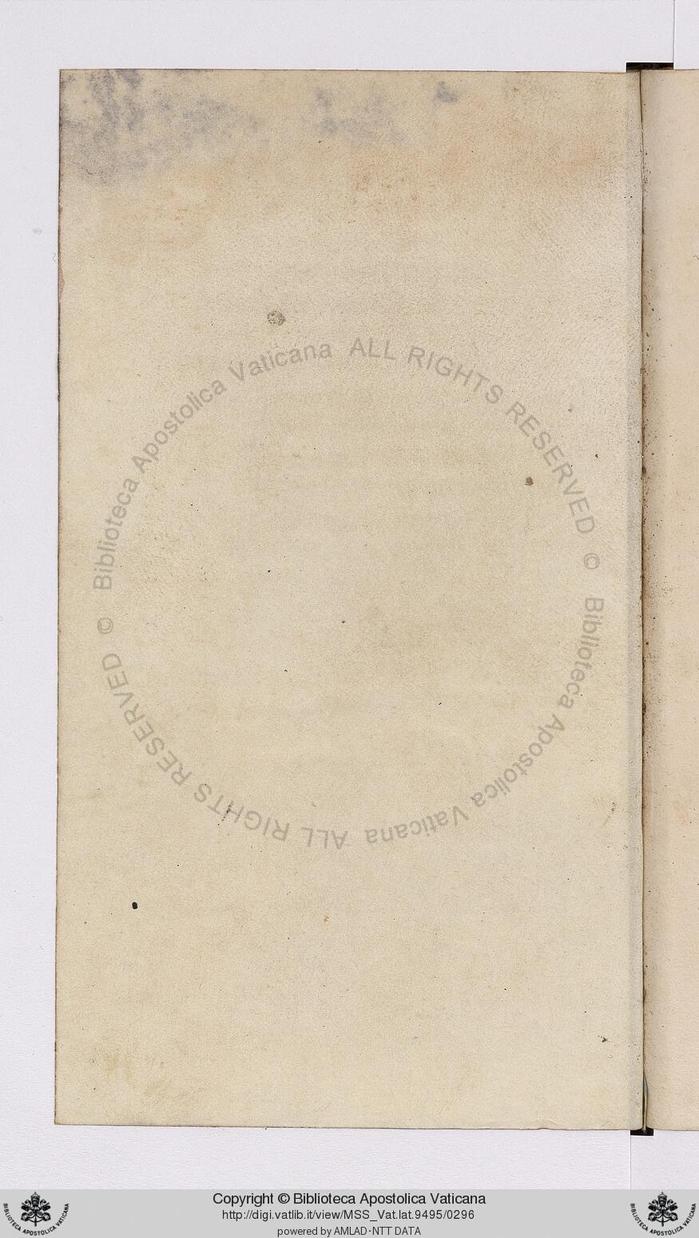
Another library joins the database with the addition of Ms.1185 from the Bibliothequè de l’Arsenal, located in Paris near the former site of the Bastille. This is a 15th C. Book from Cambrai, now in northern France. The book is in a very high quality bâtarde hand, with multiple flourished (nearly cadel) capitals in the calendar test. There are also illusionistic borders, with shell-gold backgrounds, on the outer edge of every page, both text and calendar, except for those with more complex decorative programs.
The text of the calendar is in French with some very specific-to-Cambrai entries, such as Bishop Gaugericus (feast in red on August 11 (370), Octave on August 18 (4007), elevation on September 24 (3803)).
An interesting variant is the indication of the Epiphany (January 6 (1488)) (see f.1r below). In French calendars this is usually spelled as La Tiphaine (or a varient thereof), however in MS.1185 it is spelled in hybrid La epyphanie n[ost]re s[iegneu]r. The article is never seen in Latin calendars, but neither Epyphanie nor vocal variants, are seen in French Calendars. The closest match to this entry, oddly, is the early 16th C. Ventian calendar in Houghton MS Typ.1000
(DB Id: 265)
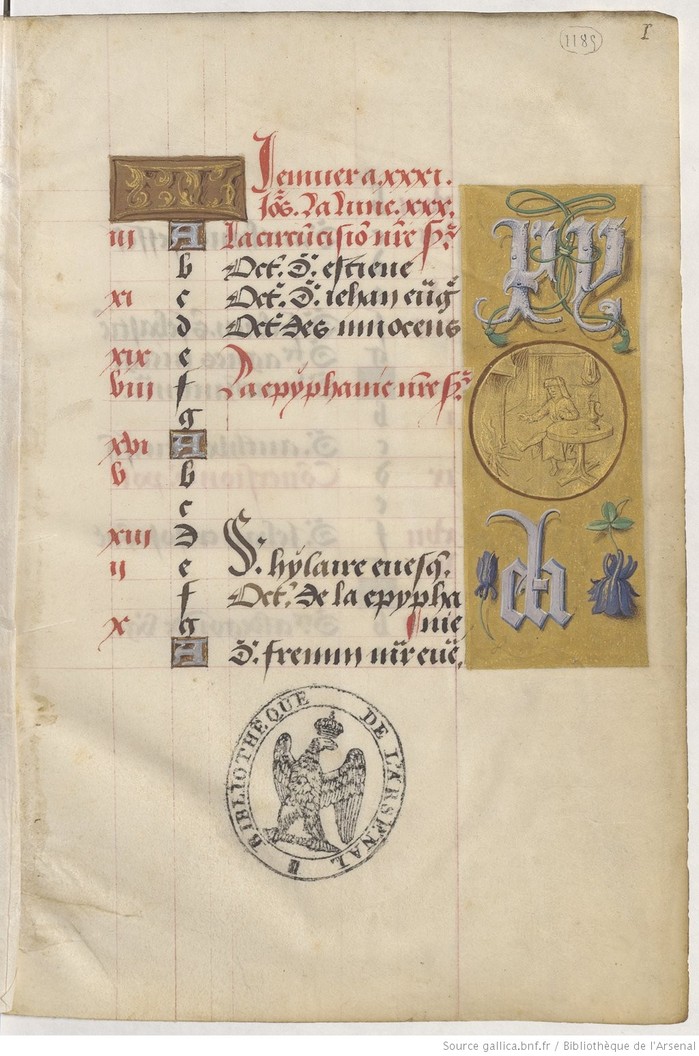
We know more about the location of manuscript MS Lat 34 from the Bibliothèque de Genève, hosted by the excellent e-Codices, than we usually do. This was made for use in the Abbey of St. Martin, in Tours, France. Sadly the monastery was destroyed during the revolution due to St. Martin’s connection to the royal family, dating back to Clovis. The modern Basilica of St. Martin was built on the same site in the late 19th century.
The calendar is unusual in containing a large amount of non-festal dating. All of the Egyptian days are marked in full and there are the “keys” to both Rogation and Pentecost, though not for Easter, which is the most common. For Easter, there is a little poem on the outer margin of the first part of January (see f.3r below) that gives a simplified way of predicting the date. There’s also an entry for the day of Creation, according to Bede and the yet-unexplained “Septim[us] embolism[us]”. The saints are as expected. There are several feasts for St Martin, including the common, Translation on July 4 1854, and the uncommon, Subvention on May 12 2543, Octave of Translation on July 11 4220
(DB Id: 246
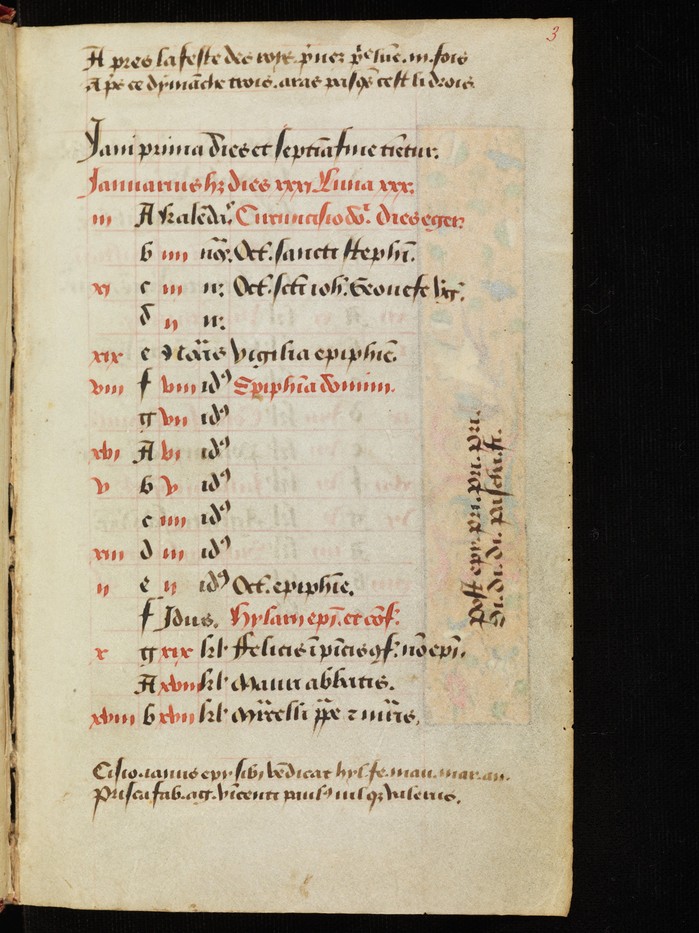
Morgan Library M.14 is another Italian Book of Hours, this one is from the 1490s, from Florence and was owned by the Franceschi-Pitti family, their arms are in it. The calendar is very unusual, in layout, in decoration and in population. Each month has 3 sides, with an illustration of the sign of the Zodiac in the sky at the start (see f.1r below). The short Egyptian verses are in the outer margin, in a smaller hand, and there is no KL for Kalends, only the first letter of the month in gold on a jewel-tone background. The feasts are graded in gold and blue, with blue the most important ones. The saints are a mishmash of unusual Italian and French saints, many of them heretofore unrepresented in the DB. With a few minor exceptions, a wrap-around error on King Sigismund (listed on April 30) being the most obvious, the saints are accurate. There are 2 missing days in the calendar, July 1 and November 12, but the scribe managed to catch Nov. 12 and inserted at least the dominical 'a' interlinearly in blue. No indication exists that the missing July 1 was noticed.
(DB Id: 164)
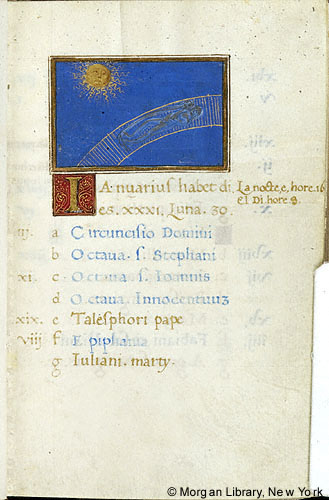
(Taking a break from the Morgan Library) Houghton Library Richardson 34 is an English book, use of Sarum, from the late 15th century. The calendar has some interestingly English saints, like Swithun and Oswald, and the usual Reformation edits, all of the "pape" notations and reference to Thomas Becket were erased and then re-added in a much later hand. St. Evaristus, who was a pope in the first century, and St. Hyginius (See f.1r below), pope in the second, were also added in that same later hand, though there's no evidence they there earlier. Otherwise the calendar is exceedingly accurate and has many saints added alongside the larger feasts, such as St. Hillary alongside the Epiphany on January 6 (see f.1r below)
(DB ID: 190)
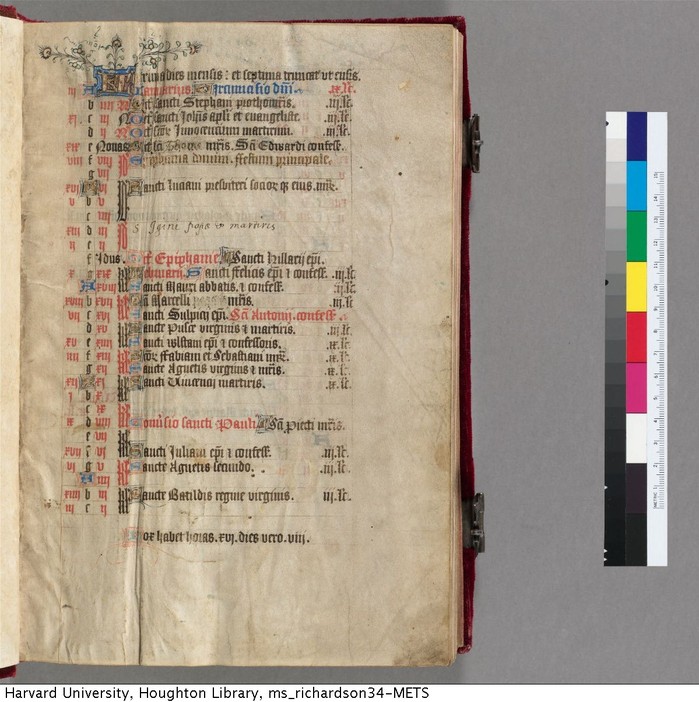
Richardson 10, from Harvard's Houghton Library, is a profoundly weird French Book of Hours, circa 1515. The calendar is Parisian-ish, nearly full, with mostly the standard Paris saints, but not a full Paris-set, i.e. January starts with the Circumcision and lacks St. Geneieve (see f.1r below). After the calendar the book contains the Lords Prayer (in French) and 7 sets of Hours, possibly as one for each day of the week. These Hours include both the usual ones -- Hours of the BVM, Hours of the Holy Cross, the unusual ones -- Hours of Passion. Then it has some completely made-up things -- the Hours of All Saints, the Hours of St. Barbara, a Mass against Pestelence, etc. There are no Gospel pericopes and no obvious Litanies, though there are prayers to St. Catherine and St. Martin of Tours. To round it out, the cover is about 50 years later than the text, brass (or bronze perhaps), with a layer of red paint carved back to reveal the arms and emblem of Catherine de Medici.
(DB ID: 189)
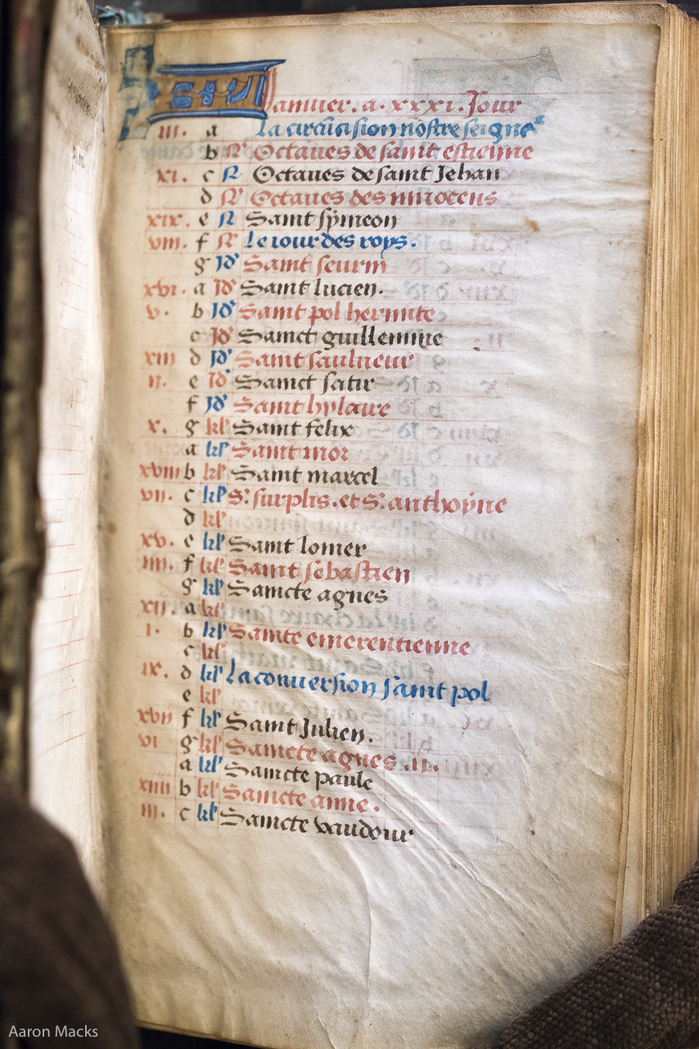
British Library Royal MS 2 A XVIII is a lovely Sarum use book, and the most entertainingly Tudor book possible. In addition to all of the relevant English saints, Edward the Confessor, Cuthbert and Etheldreda, there is the erasure of ALL references to Thomas Becket (see his Octave on f.28r) and even the title 'pape' has been removed where possible. The margins are filled with later notes about the goings-on with the royal household: "her decessed queene katerine", and "this day king harry the viith wedded the queen Elisabeth..."
